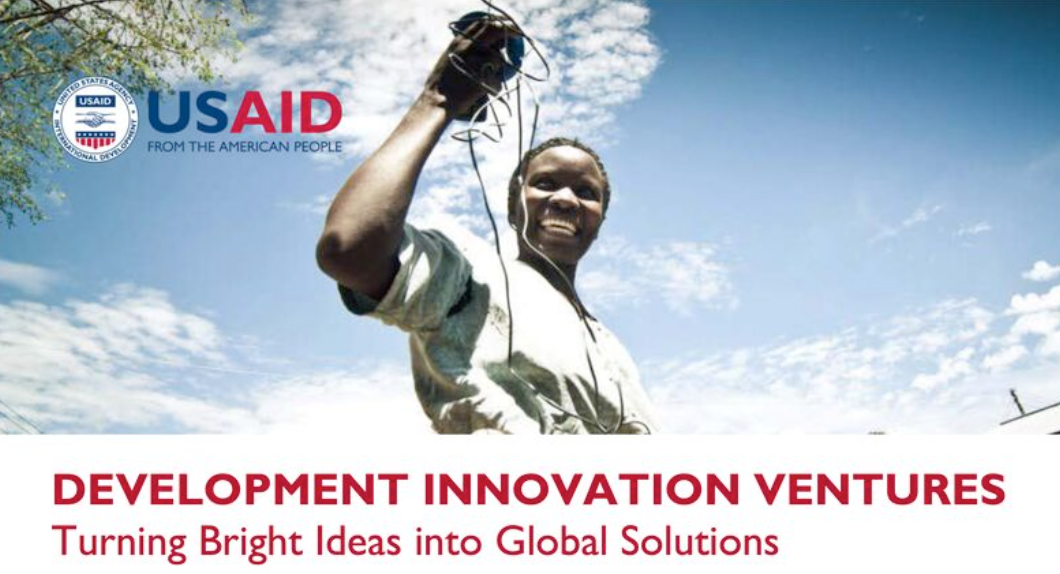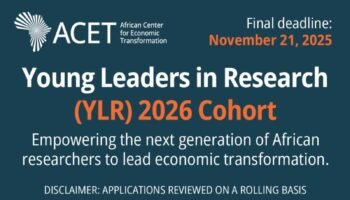The U.S. Agency for International Development (USAID) is inviting applications for the Development Innovation Ventures (DIV) program. Through a year-round grant competition, Development Innovation Ventures (DIV) sources proposals for innovations that address international development challenges and improve the lives of people living in poverty in developing countries around the world.
Development Innovation Ventures (DIV) provides grant funding to innovators and researchers to test new ideas, take strategic risks, build evidence of what works, and advance the best solutions.
DIV’s evidence-based, tiered-funding model embraces risk at early stages and mitigates risk at later stages, ensuring that funding is targeted to the most cost-effective innovations that can improve people’s lives. DIV takes a broad approach to innovation; innovations can be business models, products, behavioral interventions, applied research, or replications of proven innovations in novel environments.
DIV provides tiered funding to pilot, test, and transition to scale (i.e., grow to reach the highest number of beneficiaries possible) those innovations that demonstrate evidence of impact, cost-effectiveness, and the potential to scale.
Development Innovation Ventures (DIV) Core Principles
Development Innovation Ventures approach is centered around our three core principles: evidence of impact, cost-effectiveness, and scale. DIV assesses each applicant through the lens of these principles, commensurate to the stage or type of funding sought.
Funding Details
DIV offers the following funding:
- Stage 1: Pilot (Up to $200,000)
Stage 1 grants support innovation pilots in developing country contexts. Stage 1 innovations are early in their development and require testing to understand user demand, feasibility, impact, and financial viability. Innovations at this stage must be post-prototype or -ideation. While an approach to monitor impact is necessary at this stage, a rigorous impact evaluation methodology is not required.
- Stage 2: Test and Position for Scale (up to $1,500,000)
Stage 2 grants support rigorous testing to determine impact or market viability. Public sector innovations at this stage should demonstrate rigorous evidence of causal impact and cost-effectiveness or use DIV funding to build such evidence. Stage 2 funding can support impact evaluations, further market testing, strengthening business or delivery models for scale, or operational expansion for innovations that have already conducted successful pilot testing.
- Stage 3: Transition to Scale (up to $15,000,000)
Stage 3 grants transition proven approaches to widespread scaling in new contexts or new geographies. Applicants should have demonstrated evidence of commercial viability or rigorous evidence of impact and cost-effectiveness at the Stage 2 level and must leverage additional external funding or partnership.
- Evidence Generation Grants: (Up to $1,500,000)
Evidence Generation grants support research and evaluations of widely-used development approaches that lack sufficient evidence of impact and cost-effectiveness. Evidence Generation awards support impact evaluations, including randomized controlled trials and, if appropriate, quasi-experimental methods.
- Award Ceiling: $15,000,000
- Award Floor: $25,000
- DIV awards are typically a maximum of three (3) years in length.
What Development Innovation Ventures (DIV) might fund?
DIV recognizes that innovation can take multiple forms. Some examples of development innovations that DIV may support include the following:
- New technologies;
- New ways of delivering or financing goods or services;
- New business models;
- Cost-effective adaptations to existing solutions;
- New ways of increasing uptake of highly effective solutions, including replication and scaling to new places;
- Policy innovations;
- Social or behavioral innovations based on insights from behavioral science; and
- Data collection and rigorous evaluation to measure the social impacts of promising innovations.
What DIV typically does not fund?
There are some types of projects that are not a good fit for DIV’s objectives. These include but are not limited to the following:
- Innovations at the idea stage that have not yet been created (i.e., that are preprototype);
- Projects with limited potential to scale cost effectively (e.g., construction of immobile physical infrastructure, including schools, power plants or lines, and factories);
- Basic scientific research (e.g., laboratory research of a prototype with no field testing);
- Innovations that are unlikely to generate significant development impacts that benefit the base-of-the-pyramid (e.g., innovations that target high-income customers);
- Planning, diagnostic, and other tools that are difficult to link directly to measurable development impacts for people living in poverty and that reach millions of people only indirectly (e.g., a stand-alone monitoring or evaluation platform);
- Innovations that are applicable only in very limited contexts that limit their ability to scale—or reach—a large number of people in need (e.g., projects that target a very rare disease);
- Research that provides evidence of impact but does not assess cost-effectiveness or scalability; and
- Intermediaries with an indirect impact on development outcomes (e.g., incubators, accelerators, start-up boot camps, and other conveners).
Who is eligible to apply?
- Organization: DIV accepts applications from anyone, including businesses, social entrepreneurs, individuals, nonprofit organizations, researchers, and governments.
- Geography: DIV supports innovations across all countries where USAID operates.
- Sector: DIV accepts applications across all development sectors, including education, environment, energy, democracy, economic development, and others.
- You can verify your eligibility through their Self-Screening Questionnaire
How to Apply?
- Draft your application in MS Word using their sample application form. This document contains sample applications for all Stages and for Evidence grants.
- You will need to create an account on the DIV application portal so that you may work on the application over time and check the status of your application.
- All applications received through the DIV application portal are reviewed by the DIV team. After initial review, applications are either moved into the due diligence stage (Step 3) or declined. Applicants usually receive feedback within 2 to 3 months after submitting an application.
For more details visit: DIV
Application deadline: October 31, 2024
Elevate Your Business With Our Expert Services!







